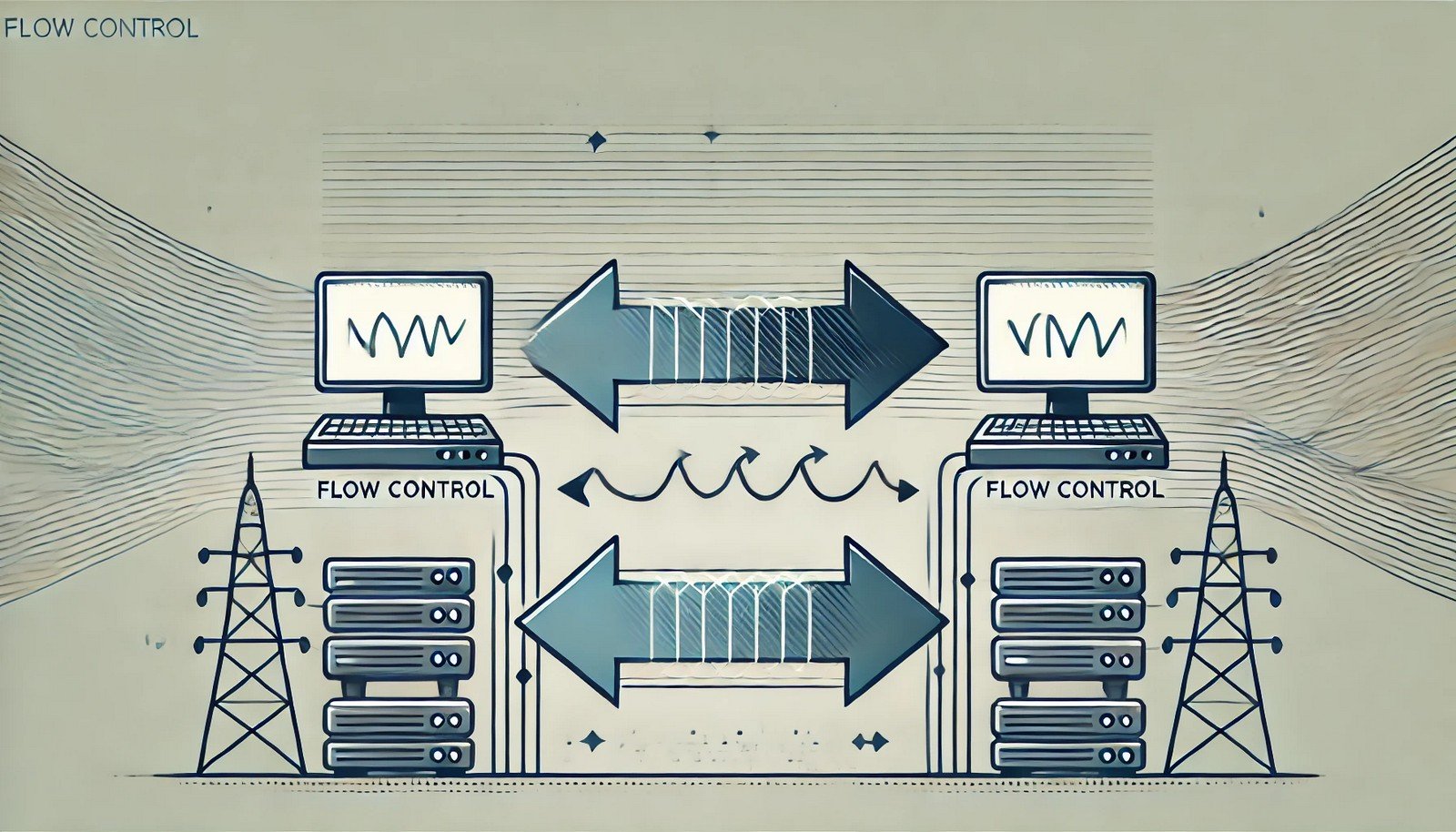Flow Control

(Representational Image | Source: Dall-E)
Quick Navigation:
- Flow Control Definition
- Flow Control Explained Easy
- Flow Control Origin
- Flow Control Etymology
- Flow Control Usage Trends
- Flow Control Usage
- Flow Control Examples in Context
- Flow Control FAQ
- Flow Control Related Words
Flow Control Definition
Flow control is a technique used in computer networking and programming to manage the rate of data transmission between two devices or processes. It ensures that the sender does not overwhelm the receiver by sending more data than it can process at a given time. Flow control mechanisms include buffering, windowing, and congestion control, which optimize data transmission efficiency and prevent data loss. In networking, protocols like TCP use flow control to maintain smooth communication between devices.
Flow Control Explained Easy
Imagine you are pouring water into a glass. If you pour too fast, the water spills over. If you pour too slow, it takes too long to fill. Flow control works like this: it helps computers send and receive information at the right speed so nothing overflows or gets lost.
Flow Control Origin
Flow control principles have been integral to computing since the early development of data transmission protocols in the 1960s. As computer networks grew in complexity, engineers developed methods to regulate data flow efficiently. Protocols like TCP/IP incorporated flow control to manage traffic in an increasingly interconnected world.
Flow Control Etymology
The term "flow control" is derived from the words "flow," meaning the movement of data, and "control," signifying the regulation of its transmission.
Flow Control Usage Trends
Flow control has evolved alongside networking and programming advancements. The rise of high-speed internet, cloud computing, and real-time applications has increased the demand for sophisticated flow control mechanisms. Modern networking stacks optimize flow control for video streaming, online gaming, and IoT communications to ensure seamless user experiences.
Flow Control Usage
- Formal/Technical Tagging:
- Computer Networking
- Operating Systems
- Software Development - Typical Collocations:
- "flow control mechanism"
- "TCP flow control"
- "data transmission flow control"
- "windowing in flow control"
Flow Control Examples in Context
- TCP uses flow control to prevent packet loss when transferring large amounts of data over the internet.
- Streaming services like Netflix implement flow control to adjust video quality based on available bandwidth.
- In programming, flow control structures like loops and conditionals manage how code executes based on given conditions.
Flow Control FAQ
- What is flow control in networking?
Flow control in networking prevents data loss by regulating data transfer speeds between devices. - Why is flow control important?
It ensures efficient data transmission, preventing congestion and packet loss. - What are common flow control techniques?
Buffering, windowing, and congestion control are widely used methods. - How does TCP implement flow control?
TCP uses a sliding window mechanism to control data transmission between sender and receiver. - What is the difference between flow control and congestion control?
Flow control manages data between sender and receiver, while congestion control prevents network-wide slowdowns. - Is flow control used in programming?
Yes, programming languages use control structures like loops and conditionals to regulate execution flow. - Can flow control impact internet speed?
Yes, effective flow control improves data transfer efficiency, reducing latency and buffering. - What role does buffering play in flow control?
Buffering temporarily stores data to prevent overloading the receiver. - How does flow control help in real-time applications?
It optimizes data delivery in video calls, gaming, and live streaming to prevent lag. - What is windowing in flow control?
Windowing limits the amount of unacknowledged data in transit to ensure smooth communication.
Flow Control Related Words
- Categories/Topics:
- Computer Science
- Networking Protocols
- Software Engineering
Did you know?
The TCP flow control mechanism dynamically adjusts data transmission rates based on network conditions. This feature enables stable connections, even when multiple users stream content or download large files simultaneously.
PicDictionary.com is an online dictionary in pictures. If you have questions or suggestions, please reach out to us on WhatsApp or Twitter.Authors | Arjun Vishnu | @ArjunAndVishnu

I am Vishnu. I like AI, Linux, Single Board Computers, and Cloud Computing. I create the web & video content, and I also write for popular websites.
My younger brother, Arjun handles image & video editing. Together, we run a YouTube Channel that's focused on reviewing gadgets and explaining technology.



Comments powered by CComment